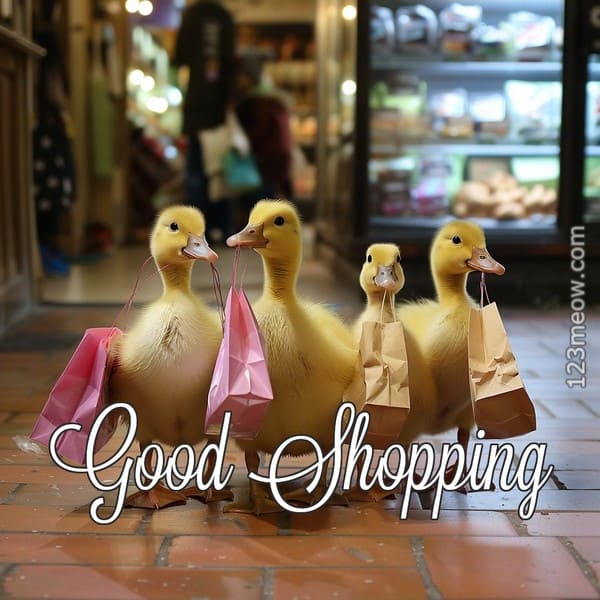Have a good shopping cards, pics
Welcome to the page where wonderful avatars, stickers, emojis, postcards, wishes, pictures, memes "Have a good shopping" are posted! Here we have collected a collection of unique and impressive emotions expressed by animals. In each section, we try to emphasize the individuality and importance of each animal on planet Earth!
Hi there,
We give positive emotions to people and help animals. Please take part and support us
 Baby elephants, or calves, are born weighing around 200 to 300 pounds (90 to 136 kg) and stand about 3 feet (1 meter) tall. One fascinating fact about elephant calves is the importance of their trunk, which they learn to use through practice. At birth, a calf's trunk is a bit clumsy, and it takes them several months to master its use for drinking, picking up objects, and eating. They often playfully swing their trunk around or even trip over it, but as they grow, it becomes a vital tool for survival, allowing them to smell, touch, grasp, and communicate.
Baby elephants, or calves, are born weighing around 200 to 300 pounds (90 to 136 kg) and stand about 3 feet (1 meter) tall. One fascinating fact about elephant calves is the importance of their trunk, which they learn to use through practice. At birth, a calf's trunk is a bit clumsy, and it takes them several months to master its use for drinking, picking up objects, and eating. They often playfully swing their trunk around or even trip over it, but as they grow, it becomes a vital tool for survival, allowing them to smell, touch, grasp, and communicate.
Another remarkable aspect of elephant calves is the strong bond they share with their mothers and the entire herd. Elephants are highly social animals, and the care of the young is often shared by other females in the group, known as "allomothers." These allomothers help the mother elephant raise and protect the calf, ensuring it stays safe within the herd. This communal care system strengthens social bonds within the group and helps the calf learn important survival skills.
Elephant calves also have an extended childhood compared to many other animals, remaining dependent on their mothers for several years. They are nursed for up to two years, but they stay close to their mothers for much longer, sometimes up to a decade, learning everything from finding food and water to navigating the complex social dynamics of elephant society. This long learning period is critical for their development and eventual success as adults in the wild.




